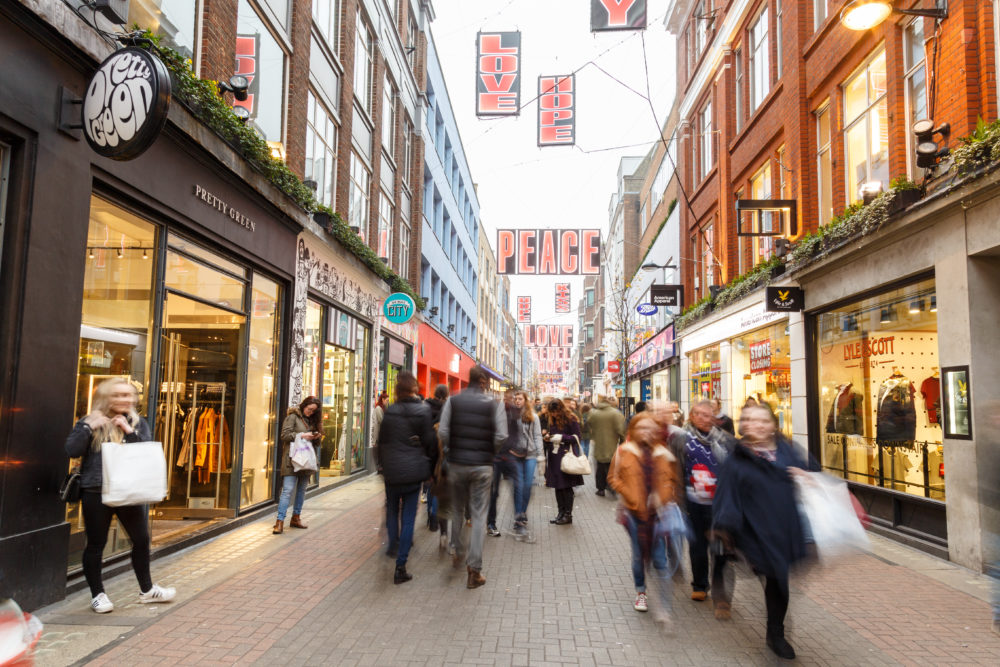Recently, popular discount store Wilko’s announced the closure of all of its high street stores, while stationery and bookstore W H Smith has reported they won’t be opening any new stores on UK high streets.
So, what does this mean for the UK high street – and how has it got to be this way? We’re breaking down exactly what’s going on in this article.
What does the high street look like in 2023?
UK high streets used to be buzzing places filled with shoppers, restaurant-goers and entertainment-seekers.
While they’re still used for some of these activities, the footfall of the UK high street has become noticeably smaller as technology has developed.
This was already the case before the COVID pandemic, but lockdowns due to high cases of the virus meant that a lot of businesses had no choice but to move online.
Once lockdowns lifted, many stayed online.
Why are shops closing?
Shops are largely closing due to a changing consumer shift from buying products in-person to purchasing online.
Consumer shifts have happened frequently throughout the centuries; notably from markets to corner shops and from corner shops to the large supermarkets that many people frequent today!
But in recent years, many stores have moved online.
Initially, purchasing in person had the distinct advantage of being quick; often delivery times used to be long, meaning you might not get your item until a week or more after purchasing. However, programs like Amazon Prime now mean you can receive your item as little as a few hours after ordering, making people feel even less compelled to go to the high street for shopping!
Are restaurants facing the same fate?
In general, more restaurants seem to be opening each year on Britain’s high streets.
In fact, Business Insider comments that in 2018/19 “Almost half of the requests [of change of use applications] were made to convert the building for use as a restaurant or cafe or a hot food takeaway” and “Eleven per cent of applications were to create drinking establishments such as pubs or wine bars”.
This does make sense; going out to eat is a social and recreational activity, so people may be more inclined to choose an evening eating and catching up with loved ones rather than a trip to the shops.
However, the rise of apps like Deliveroo, where food can quickly be sent to your door, has changed the face of many restaurants. Some have claimed that the app is undercutting them, whereas others have shifted to primarily or even solely takeaway service.
Plus, during the cost of living crisis, fewer people are eating out at restaurants, perhaps favouring home-cooking meals for themselves, family or groups of friends.
So while the landscape is a little bit different to stores, in-person restaurants are also struggling.
What about hospitality and leisure businesses?
Hospitality and leisure businesses share a lot of similarities with restaurants and bars. They’re “enjoyment” facilities, spaces where people tend to spend a few hours and attend for the purpose of recreation or leisure.
However, this means that they’re struggling with many of the same problems as restaurants and bars.
These businesses, deemed as “unessential”, were among the first to close and last to open in COVID related restrictions.
Since then, many people have resorted to online alternatives. For example, there’s been a huge rise in on-demand online fitness as people turn away from traditional gym classes.
Casinos are another industry that’s largely moving online. In fact, many new casinos in the UK are online nowadays, nodding to the rise of people gambling online.
Cost of living plays a role here as well; recreational activities are generally the first thing that people try to cut back on in a recession, which can further impact these industries.
What is the solution?
So, what’s the solution to these closures?
Many high streets across the UK are taking serious stock of their high street and analysing how they work in 21st-century Britain.
More and more businesses are focusing mainly or entirely online; for example, popular clothes website Topshop is now only available online through ASOS.
Town planners across the country are looking at how they can adapt their town centres to suit the needs of the 21st-century. Some are considering building more housing, which there is often a shortage of; others are considering different types of restaurants and entertainment establishments (although, as discussed, these businesses are facing some issues too).
Final thoughts
Throughout history, businesses have always had to adapt to consumer wishes, and this time is no exception.
While the future of UK high streets does look uncertain – particularly in an economic crisis – the internet provides almost limitless opportunities to reach a customer base.
Running a business in 2023 has its challenges, but many will find they can adapt and overcome issues if they are creative, open and forward-thinking.

